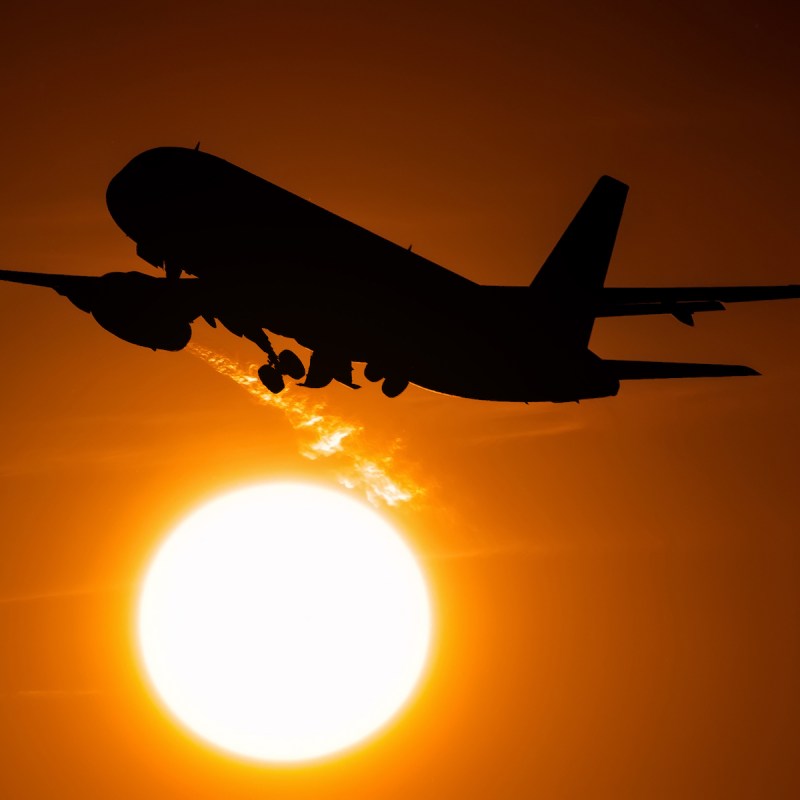
Can it get too hot to fly?
Videos by TravelAwaits
The question, at first, sounds like something a 6-year-old child would ask. After all, considering aviation’s long history and the cutting-edge technology available today, it would certainly seem that heat couldn’t have an impact on modern aircraft’s performance.
But then there’s the saga of passengers on a recent Delta Air Lines.
Delta’s flight 555, which was scheduled to depart from Las Vegas bound for Atlanta on July 17, ended up sitting on the tarmac for up to 4 hours. In the meantime, the temperature inside the aircraft is said to have reached 111 degrees, according to Reuters.
While Delta has declined to say how many total passengers eventually received medical attention, the airline did announce that one passenger and one flight attendant were transported to a hospital for heat-related illnesses, according to the Seattle Times. Passengers also said they saw one fellow passenger pass out, one throw up, and two others be taken to the front of the plane and given oxygen.
Then there’s the scorching heatwave that’s baking the southern United States.
While Phoenix has entered its third week of record-breaking heat with temperatures regularly topping 110 degrees, the heatwave does extend from southern California to Florida, where forecasts call for continued sweltering heat with index values topping 105 degrees. What’s more, the heatwave is now expected to continue well into August, according to the National Oceanic and Atmospheric Administration.
So, with all that in mind, here’s what you need to know about jet performance in extreme heat and how airlines are coping with this summer’s ongoing heatwave.
How High Temperatures Effect Aircraft
Large jets, such as those from Boeing or Airbus, can operate in temperatures more than 120 degrees. However, extreme heat does make it difficult for those planes to take off.
The problem is that airplanes fly through a combination of propulsion and what’s known as “lift.”
When air heats, it expands and is less dense than cooler air. As a result, in extremely hot temperatures, there’s less air under a plane’s wings to give it lift, explains Monroe Aerospace, which supplies equipment for the aerospace/defense industry and others.
The easiest solution for airlines, since an airplane’s weight at takeoff can be manipulated, is to reduce its fuel load, cargo, or passenger weight so the plane weighs less and can get up to speed faster so it achieves sufficient lift for take off.
How Airlines Are Responding
As the heatwave in the U.S. drags on, Las Vegas-based Allegiant Airlines announced it will delay flights if the heat creates a threat to passenger safety or comfort, according to Time.
Delta has also announced it is taking additional safety measures this summer.
“Additional protocols have been put in place to address the operational impacts extreme heat has on aircraft, including loading less fuel to account for weight and balance, and schedule refueling along the route when needed,” Delta said in a statement, according to The Guardian.
Finally, American Airlines CEO Robert Isom announced last week that the airline will make sure it has cooled air on the jet bridges that are hooked to planes at airports. The airline will also perform early maintenance on auxiliary power units that run a plane’s onboard systems when its larger engines are shut down, according to the Dallas Morning News.
Delta, American, and United Airlines have all announced that airport ramp workers, baggage handlers, and other personnel working outside will be able to take more frequent breaks during the heatwave, Time reports. The airlines said those workers will also receive additional water and have access to shaded areas or air conditioning and cooling towels.
For more about aircraft, be sure to read our Airports and Flying content, including:
